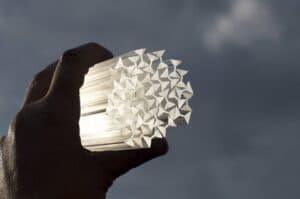What is the difference between Plexiglas and Polycarbonate is a question that customers ask us when they seek a transparent plastic material.
Firstly, it is worth mentioning that it is essential to analyze every single profile according to its intented function. In the following paragraphs, is our explanation between the difference of Plexiglas and Polycarbonate and how to evaluate each material for the most suitable application.
Often, there is some confusion between Plexiglas and Polycarbonate for “sheets”, as opposed to “raw materials” that are suitable for the production of plastic profiles. The products are similar, but with some important distinctions.
Generally, both materials can substitute glass, but having different characteristics
PMMA polymethylmethacrylate or methacrylate (Plexiglas)
Poly-methacrylate or methacrylate (PMMA) is often referred to as Plexiglas, a brand from the German company Rohm that introduced it into the market in 1933.
It is a plastic material made by polymers from metile methacrylate, methyl ester of methacrylic acid.
Lighter than glass with a density of 1,19 g/cm3 , about half of glass, (2,5 g/cm3), but with a higher impact resistance of 17 times.
Compared to glass, it has a superior breaking point, but it is inferior to Polycarbonate
It is more fragile than polycarbonate. It is possible to reduce the fragility with apposite anti-impact additives.
Plexiglas does not suffer fatigue resistance, and does not have notch effect, it can uphold relative heavy weight.
It has an extremely shiny and smooth surface, and adapts well to products that require aesthetical characteristics.
One of its qualities is high transparency, more than glass, with a coefficient of about 0.93 against 0.8-0.9 of glass.
There are specific PMMA formulations that block the visible light but allow infrared light pass through of one heat interval (remote controls, presence detectors).
PMMA burns in the presence of air with a temperature higher than 460° C. It is not a fireproof material and it should be kept away from open flames.
It has a good chemical resistance to acids, detergents, cleaning products, but is not resistant to alcohols and solvents.
It is available transparent, frosted, fluorescent, and in any custom color as requested.
It is odorless, non-toxic, anti-bacterial, and 100% recyclable.
Products: sheets, coverings, pipes, bars, safety glass, lens, furnishing objects and decors, home items, headlights, lamps, shelves, lighted signs, motorcycle windshields, anti-noise devises.
PC Polycarbonate
Polycaronate (PC) is a carbonic acid polyester derived from the organic composite bisphenol A (BPA) utilized in the synthesis of plastic materials.
Formulated in the laboratory back in 1898, it was only produced for commercial applications in 1959 in Germany by Bayer and at the same time period, by General Electric in the United States.
Lighter than glass with a density of 1.2g/cm3, but with a high impact resistance 250 times superior
Polycarbonate, is generally chosen for its considerable mechanical properties. It has an elevated tenacity, high impact resistance, elasticity, and hardness.
It does not have a good fatigue resistance and it is sensitive to notching.
It is malleable, suitable for cold curving, and easy to process.
Polycarbonate has a transparent index of 0.86, (a good characteristic) but inferior to glass and methacrylate.
When polycarbonate is exposed to UV rays, it turns yellowish 6 more times with respect to Plexiglas in one temporal arc, and it also opacifies.
Polycarbonate has a lower inflammability compared to plexiglas but it is not fireproof. With some additives, it reaches some degree of self-extinguishing that varies on the basis of the thickness of the product.
Polycarbonate has a good resistance to acids, but not to esters and ketones (ex. acetone), while it opacifies with alcohols.
It is available in transparent, frosted, light diffusing, fluorescent, and in any custom color.
It is odorless, non-toxic, and anti-bacterial. 100% recyclable.
Products: double and single wall sheets, coverings, pipes, rods, portholes, lenses, object glasses, headlights, lamps, furnishings and decors, CD cases, cellular phone components, protective shields
Difference between Plexiglas and Polycarbonate: which is better?
To conclude on the major difference between Plexiglas and Polycarbonate, and which is better to utilize, let’s consider the car lights that are being manufactured in plastic for safety and weight issues.
Car light lenses need to be very transparent, especially the headlights which are subject to impacts with small rocks and various debris found on the roads. Therefore, the headlight lenses in polycarbonate are the most appropriate because of the high impact resistance, while the backlights should be in PMMA for the higher transparency property and reduced yellowing caused by the UV rays.
Request a quote for your plastic profile now
Fill out the form to request a quote or personalized consultation.
Discover how we can help turn your ideas into reality.


